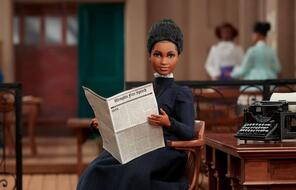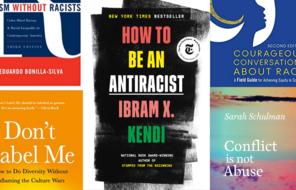The Value of Historical Diaries and Journals
I have always been fascinated by how common people experienced historical events.
I want to know what people ate in a day and how they cooked it, what they gossiped about with their friends, who they loved, where they hung out, what they thought was worth fighting for, and why they cared so much about it. Stringing firsthand accounts together helps me thread humanity into my understanding of history and trace how the choices people made in the past shape our present.
That’s why I love reading historical diaries, journals, and letters as a way of learning about historical events. These firsthand accounts of history capture the ways that major political events impacted real people’s daily lives; they tether abstract events to their concrete implications for the people who lived through them.
Of course, journals and diaries have their limitations, too. People don’t write in their diaries with the aims of historical accuracy and neutrality in mind. And even if they did, encountering any one person’s perspective of an event will give you an incomplete picture of it. Diaries also generally go through an editorial process prior to publication. And things that might be deemed controversial, or that don’t fit neatly into the narrative the publisher wants to portray, frequently get excised along the way.
It’s also important to acknowledge historical diarists were real people whose writings sometimes reflect the uglier parts of our history, including bigotry and hatred. Understanding the role these ideologies played in our past can help us confront hatred in the present and secure a better future. Yet encountering dehumanizing ideas and language can be painful and challenging. Facing History’s ELA team has compiled a guide with strategies to address racist and dehumanizing language in literature that may be helpful in navigating these texts.
Historical Diaries and Journals to Explore
Here are a few historical diaries and journals that invite you to explore the past by learning about the daily lives and perspectives of people who lived through it.
The Journal of Charlotte L. Forten
Charlotte Forten, a free Black woman and abolitionist, kept a journal from 1854 to 1864. Charlotte began her journal when she was around 16, shortly after she moved to Salem, Massachusetts to attend school, having been denied admission to the white schools in Philadelphia, where she was born. She would go on to become the first Black public school teacher in Salem. Charlotte and her family were active in the abolition movement, and she knew many of the major figures in the movement.
In her journal, she reflects on what freedom and liberty mean to her; details an inspiring encounter with Harriet Tubman; closely follows the trial of Anthony Burns, who escaped from slavery into the North but was tried as a fugitive; and describes her work teaching newly freed African Americans during the Civil War.
My Great, Wide, Beautiful World by Juanita Harrison
Growing up in rural Mississippi, Juanita Harrison dreamed of traveling to the beautiful places she saw in magazines. Leaving home at 16, she found work as a domestic laborer in Canada, Cuba, and California. In the meantime, she saved money to fund further flung travels. And in June 1927, when she was 36 years old, she set out from California on a trip that would span 22 countries and eight years.
From Ireland to India, Juanita recorded her adventures in a journal, capturing snapshots of the people she met, the places she saw, and the thrill she felt to be experiencing so many different cultures and customs. Her unique perspective and keen insights drew the interest of the publishing industry. My Great, Wide, Beautiful World, based on Juanita’s travel diaries, was serialized in the Atlantic Monthly and then released as a book in 1936.
As a single Black woman whose formal education ended when she was around 10 years old, Juanita refused to limit herself in the ways that the world she was born into sought to limit her, and the world was richer for it.
The Diary of Samuel Pepys
Samuel Pepys, an upper-middle class London man who eventually rose through the ranks to become administrator of the British Royal Navy, wrote regular and detailed diary entries every day from 1660 until 1669. His diary entries cover a number of major historical events, including the Great Plague of 1665 and the Great Fire of London.
From his finances to his romantic exploits, Samuel used his diary to document every aspect of his daily life, not just current events and political intrigue. In one entry, he pontificated on the finer points of a new watch he was especially proud of. He frequently went into detail about the weather, his social life, and household squabbles.
Thanks to his journaling habit, Samuel captured both an eyewitness record of significant historical moments and the more mundane realities of daily life among the upper-middle class in seventeenth century London.
The Donald Vining Diaries
Born in 1917, Donald Vining started keeping a diary at age eight and kept up the practice into old age. Childhood entries discussed school, playing with friends, and other everyday activities. As childhood turned to adolescence, Donald began to ponder world events, dream of a theatrical career, and contemplate his sexuality. In adulthood, Donald wrote about his life and experiences as a gay man living in New York City.
He drew inspiration from the diaries of Samuel Pepys, and when existing publishers declined to publish his diaries, he founded Pepys Press to publish the diaries himself. Somewhat unusually, Donald did not significantly edit or censor his work prior to publication, offering an unvarnished look at his life and evolution over the course of more than 50 years.
LGBTQIA+ people have existed throughout history, yet their full selves and stories have been concealed from history books for so much of it. Donald’s diaries provide a rare and intimate window into life as a gay man in the decades leading up to Stonewall, helping us reconstruct a small piece of this missing history.
The Journal of Emily Shore
Emily Shore was a precocious teenager in 1830s England whose aspirations toward travel and adventure stalled when she became sick with tuberculosis. She wrote regularly in her journal through the ups and downs of her illness, including her move from England to Madeira, Portugal, a community where those stricken with consumption hoped the climate would bring healing. Her diary records life with a chronic illness during the 1830s, sometimes tinged with the romanticism that came to be associated with tuberculosis in the culture of the time.
Emily's sisters heavily edited her diary before publishing it in the 1890s, and their revisions shaped their sister’s story to appeal to Victorian tastes and fashions. More recently, scholars have uncovered Emily’s earlier manuscripts and the messier realities of her life that they represent. Comparing Emily’s original journals to the way her sisters revised her story for publication provides insight into both the time period when Emily lived, and the readership to whom her sisters sought to appeal in the narrative they crafted from the journals 50 years later.
The Diary of a Young Girl by Anne Frank
Anne Frank documented her life as a Jewish teenager during the Nazi occupation of the Netherlands in what has become one of the most well-known historical diaries of all time. Anne received the diary as a 13th birthday gift in June 1942. Less than a month later, her family went into hiding when Anne’s older sister was officially ordered to report to a Nazi work camp. For two years the Frank family hid in an annex of Otto Frank’s company building. The diary ends in August 1944, three days before the Nazis discovered the group in hiding and sent them to concentration camps. While Anne died of typhus in Bergen-Belsen concentration camp, her words lived on through her diary, and her father, who survived, worked to see them published.
Diaries are often thought of as deeply private places for people to pour their innermost thoughts and feelings intended only for their future selves to read. And for many people, that is all a diary is meant to be. Yet some diarists do think about who else might one day read their ideas, and we can see evidence in Anne Frank’s surviving words that she was among them. In 1944, Anne Frank began rewriting large portions of her diary with an eye toward future publication as an account of her life in hiding. This revised version of her diary is known as Het Achterhuis or The Secret Annex and provides a window into her evolution as a writer, her changing feelings about key figures in her life, and which details of her own experience she thought should be shared with the world.














